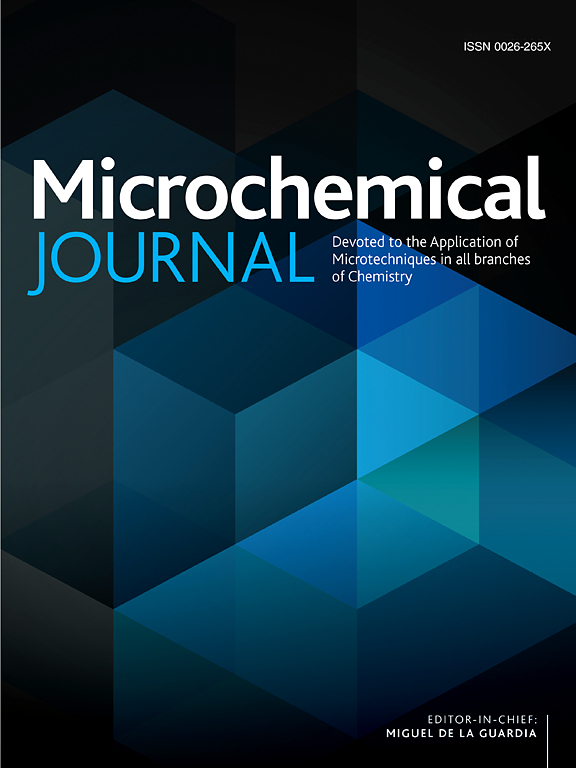Metal-doped carbon dots for sensing applications in food analysis: A critical review
IF 4.9
2区 化学
Q1 CHEMISTRY, ANALYTICAL
引用次数: 0
Abstract
Food safety has become a significant global issue, leading to a growing demand for the rapid detection of both nutritional components and contaminants in food. Fluorescent sensing based on nanomaterials holds great promise for the development of advanced detection methods in food safety analysis. Doping is a powerful technique for modifying the physicochemical properties of carbon dots (CDs) and has gained considerable attention in recent years. Compared to non-metallic atoms, metal ions possess additional electrons, a larger atomic radius, and vacant orbitals. As a result, doping CDs with metal ions can significantly alter their electronic, optical, and magnetic properties by influencing electron density distribution and energy band gaps. This review explores the synthesis methods of metal ion-doped CDs (M-CDs) and discusses their applications in food sensing, covering key areas such as the detection of veterinary drug residues, food additives, anthrax biomarkers, heavy metals and ions, pesticide residues, dyes, and other compounds. Furthermore, the challenges related to the synthesis of M-CDs are discussed, along with insights into their prospective advancements in food analysis.
金属掺杂碳点传感在食品分析中的应用综述
食品安全已成为一个重大的全球性问题,导致对快速检测食品中的营养成分和污染物的需求不断增长。基于纳米材料的荧光传感技术为食品安全分析中先进检测方法的发展提供了广阔的前景。掺杂是一种有效的改变碳点物理化学性质的技术,近年来受到了广泛的关注。与非金属原子相比,金属离子拥有额外的电子,更大的原子半径和空轨道。因此,掺杂金属离子可以通过影响电子密度分布和能带间隙显著改变CDs的电子、光学和磁性能。本文综述了金属离子掺杂CDs (M-CDs)的合成方法,并讨论了其在食品传感中的应用,涵盖了兽药残留、食品添加剂、炭疽生物标志物、重金属和离子、农药残留、染料和其他化合物的检测等关键领域。此外,还讨论了与m - cd合成相关的挑战,以及对其在食品分析中的前景进展的见解。
本文章由计算机程序翻译,如有差异,请以英文原文为准。
求助全文
约1分钟内获得全文
求助全文
来源期刊

Microchemical Journal
化学-分析化学
CiteScore
8.70
自引率
8.30%
发文量
1131
审稿时长
1.9 months
期刊介绍:
The Microchemical Journal is a peer reviewed journal devoted to all aspects and phases of analytical chemistry and chemical analysis. The Microchemical Journal publishes articles which are at the forefront of modern analytical chemistry and cover innovations in the techniques to the finest possible limits. This includes fundamental aspects, instrumentation, new developments, innovative and novel methods and applications including environmental and clinical field.
Traditional classical analytical methods such as spectrophotometry and titrimetry as well as established instrumentation methods such as flame and graphite furnace atomic absorption spectrometry, gas chromatography, and modified glassy or carbon electrode electrochemical methods will be considered, provided they show significant improvements and novelty compared to the established methods.
 求助内容:
求助内容: 应助结果提醒方式:
应助结果提醒方式:


